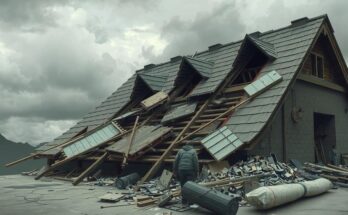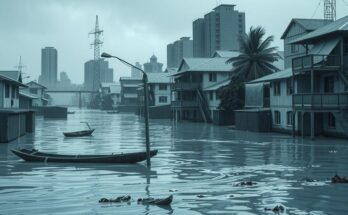Washington State is experiencing increased seismic activity, including a recent 4.5 magnitude earthquake. Experts recommend proactive preparedness measures, such as securing homes, participating in earthquake drills, and assembling emergency kits. With over 1,000 annual earthquakes, understanding local risks and adopting a prepared mindset are crucial for safety during seismic events.
Washington State is currently experiencing a succession of earthquakes, with a recent 4.5 magnitude quake recorded near Orcas Island on March 2, marking the most significant seismic activity in the area since 2020. According to the U.S. Geological Survey, this quake was part of a sequence of tremors, totaling four earthquakes of magnitude 3.0 or greater since February 18, alongside a notable 4.8 magnitude quake in southern British Columbia. Washington frequently encounters over 1,000 earthquakes annually, primarily minor, due to its positioning along the Cascadia Subduction Zone and various active fault lines.
Experts emphasize the importance of taking proactive measures to prepare for potential earthquakes. Monty Burich, a volunteer with the American Red Cross, notes that many individuals fail to prepare due to the misconception that significant earthquakes are unlikely to affect them. Burich states, “The very first thing is start by doing something” to foster a change in mindset toward earthquake readiness. Initiating preparations can significantly ease the transition to more extensive measures.
To enhance preparedness, individuals should become familiar with their environment and assess potential risks, such as landslides or flooding. Key recommendations made by the Washington Emergency Management Division include securing heavy items, clearing pathways, and ensuring beds are positioned away from windows. Other suggestions include using secure fasteners for lights, having a fire extinguisher accessible, and storing shoes and gloves under beds for emergency access.
Participating in the Great Washington ShakeOut drill, held annually in October, is encouraged for an engaging learning experience about earthquake preparedness. According to Ted Buehner from Emergency Management Group Washington, participation is substantial, with over 1.3 million individuals registered for the 2024 drill, illustrating a community commitment to increasing awareness and readiness.
With the unpredictable nature of earthquakes, having an emergency kit is integral. Burich advises maintaining separate kits for different locations, including homes, workplaces, and vehicles. He recommends gradually assembling kits to minimize overwhelm and expense, indicating essential items such as food, water, portable lighting, and warm clothing. An often overlooked aspect is the inclusion of necessary medications and ensuring vehicles have ample fuel for evacuation if needed.
When an earthquake occurs, the recommended response is the “drop, cover, and hold” approach, which involves taking cover under stable structures. After the initial event, Burich advises waiting a moment before exiting cover to allow for secondary hazards to settle. This precaution helps individuals avoid falling debris or other dangers.
Seismic activity is more prevalent in Western Washington due to its proximity to the Cascadia Subduction Zone and active fault lines. Burich highlights that Seattle’s fault line, while possibly generating lower magnitude quakes, can cause significant damage due to its location. The state’s topography, characterized by hills and bridges, exacerbates potential risks following seismic events.
The inherent hazards include landslides and structural damage, especially in older housing stock lacking proper foundation anchoring. Burich stresses the importance of remaining vigilant regarding potential landslide indicators and advises documenting home conditions to assess damage after even minor tremors.
Overall, earthquake preparedness in Washington requires attentiveness to surroundings, proactive measures in securing residences, and effective training through community initiatives. Understanding and preparing for potential natural disasters can significantly mitigate risks and enhance safety.
In conclusion, Washington State faces seismic risks due to its geological setting. Preparedness entails not only understanding these risks but actively taking steps to secure homes and assemble emergency kits. Community initiatives, like the Great Washington ShakeOut, play a vital role in fostering awareness and readiness. Moreover, individuals must adopt a proactive mentality to ensure safety and mitigate potential damage from earthquakes. By following expert recommendations, residents can better protect themselves and their families in the event of seismic activity.
Original Source: www.bellinghamherald.com




